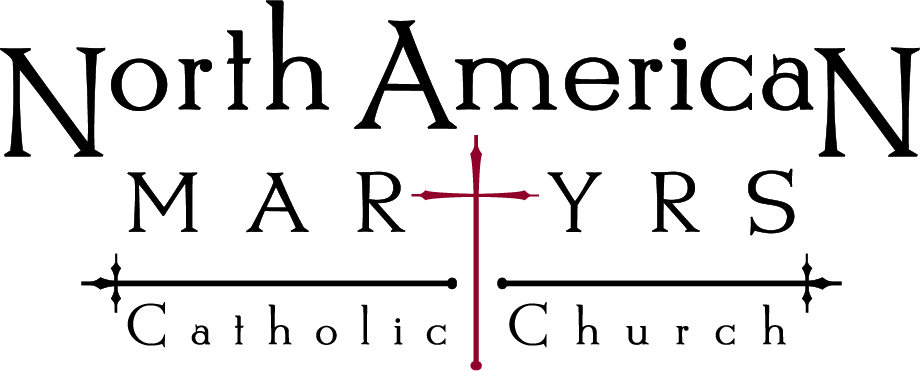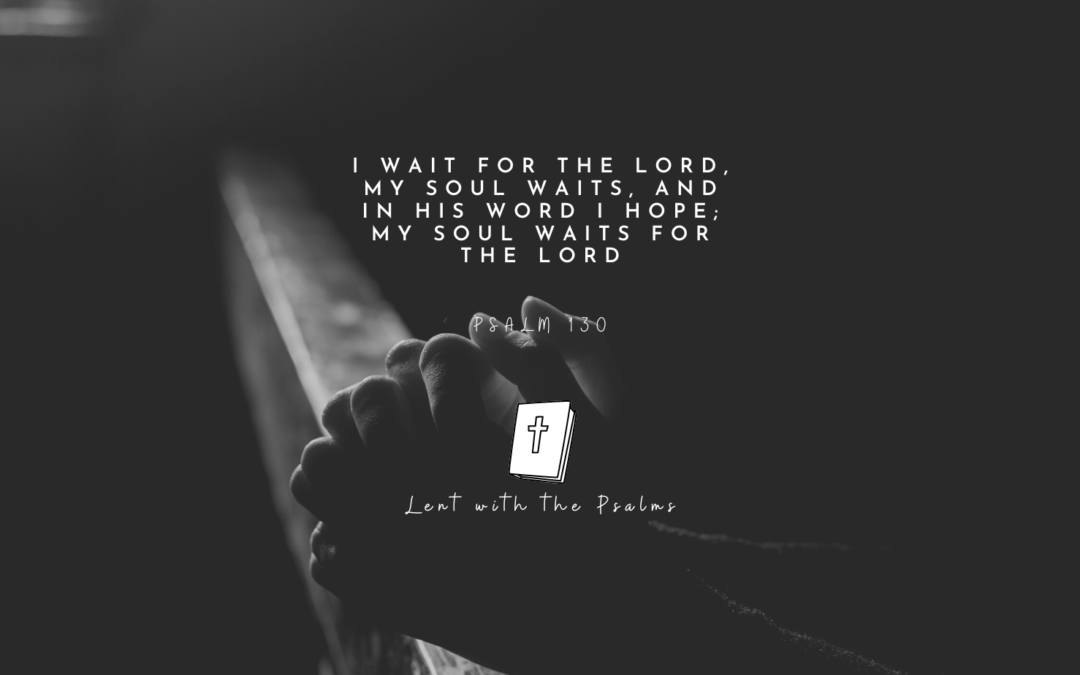Hello, friends, and welcome back to our Lenten Series on the Psalms. Last week our psalmist took us into the dark valley and to the Eucharistic table. This week our psalmist leads us up out of our sin and up the steps of the Temple. Along the way, we renew our faith in God’s character and in his promise of the resurrection. Let’s dive in.
A “Psalm of Ascents” and Mass
Remember our first psalm from a few weeks back, Psalm 51? That psalm has a superscript above it that mentions David and Bathsheba. What that tells us is that a layer of meaning in Psalm 51 only comes to light against the backdrop of that story. We can keep David’s fall and forgiveness in mind as we pray the words of the psalm. We have something similar going on here above Ps 130. This superscript doesn’t refer to an episode of David’s life, but it does tell us the liturgical context of the psalm: it’s one of the “Songs of Ascents.” Okay, so what does this mean?
Psalm 130 and the other psalms of ascents (Psalms 120-134) were traditionally recited by pilgrims as they went up to Jerusalem for various liturgical feasts. I say they “went up” because Jerusalem is situated on a hill. No matter which direction you came from, you would have to go up to Jerusalem. Also, “ascents” can refer to the steps leading up into the main courtyard of the temple (Ezekiel calls these steps “ascents” in Ez 40:6). As there are 15 psalms of ascents, there were 15 steps into this courtyard of the temple. According to later Jewish writings, the Levites would sing these psalms on these steps.
The Jews coming to Jerusalem for a feast would recite these psalms in order to prepare themselves to come into the temple and into God’s very presence. For the same reasons, the Church recommends that the faithful recite Psalm 130 to prepare for Mass, our own liturgical ascent into God’s presence. And she gives us this psalm this Sunday in order to prepare for the great feast of Easter, the feast of the Resurrection.
We’ll come back to the resurrection in a minute. First, let’s pull out a few other nuggets from our psalm.
Intimacy with YHWH
We can divide up our psalm into four stanzas, each with at least one reference to the personal name of God (YHWH). This doesn’t come across clearly in the NAB translation which simply says “Lord.” You see, out of reverence for the divine name, the Jews at some point stopped saying the name. When they came across it in scripture, they would instead say a substitute title (e.g. “Adonai / Lord” or “Hashem / The Name”). Out of reverence for the name and respect for Jewish sensibilities, the Church has shied away from saying the divine name in the liturgy. You’ll see this reflected in many English translations where you’ll see “Lord” (sometimes in all caps) where the name would be in the Hebrew.
The personal references to YHWH here express an intimacy with God which can be lost behind “lord.” The fact the name is repeated expresses this intimacy even more emphatically. This intimacy is also conveyed by the first person perspective of the prayer (“I cry to you,” “hear my voice,” “my soul waits for the Lord,” etc) and the way it addresses God directly (“I cry to you,” “let your ears be attentive,” etc.)
Out of the Depths
The first line of the poem really gets to the heart of the theme. “Out of the depths I cry to you, YHWH!” “Depths” is used elsewhere in the Old Testament to refer to the sea (see Is 51:10; Ez 27:34; Ps 69:3, 15; and Ps 130:1). And the sea, in turn, was affiliated with chaos and death. Just think of Jonah. He’s thrown into the sea and “swallowed by a fish.” This is poetically expressing the fact that Jonah was sent to his death. Jonah cries out from the depths with words very similar to our psalm: “I called out to the LORD, out of my distress, and he answered me; out of the belly of Sheol I cried, and you heard my voice. For you cast me into the deep, into the heart of the seas, and the flood surrounded me…” (Jon 2:2–3). God hears Jonah’s prayer and raises him up: “You brought up my life from the pit, O LORD my God” (Jon 2:6)
Jesus will turn to this and say he’s going to do something similar to Jonah by dying and rising again: “Just as Jonah was three days and three nights in the belly of the great fish, so will the Son of Man be three days and three nights in the heart of the earth” (Mt 12:40). And before the resurrection, he demonstrates symbolically his power over death by walking on the water of the sea of Galilee.
“A God Merciful and Gracious” (Ex 34:6)
So when we speak from “out of the depths,” we’re acknowledging the unfortunate state in which we find ourselves because of our sins. We have rejected the Lord, given ourselves over to sin and death, and we can do nothing to save ourselves. But this does not lead the psalmist – or us – to despair. No, instead of considering his own sorry state, he turns to consider the character of YHWH: “with you is forgiveness,” “with YHWH is steadfast love and with him is plentiful redemption.” This is a rather profound statement about God’s character. God is the one who does not “mark iniquities” but instead saves his people.
Our psalm here is echoing a pivotal event in Israel’s history. After God freed the Israelites from Egypt and made a covenant with them at Mt. Sinai, the Israelites sin by worshiping the golden calf. They completely reject God. Moses intercedes on their behalf and God – quite astonishingly – renews his covenant with them. While this is going down, Moses asks God that he be allowed to see God’s glory. In response, we’re told: “The LORD passed before him and proclaimed, ‘The LORD, the LORD, a God merciful and gracious, slow to anger, and abounding in steadfast love and faithfulness” (Ex 34:6). Moses is not allowed to see God’s glory but he is allowed to hear it. God’s glory is to be merciful and abounding in hesed.
This is precisely what our psalmist bases his hope on: the character of God. We see something similar in our reading from Ezekiel. Here we hear God speak through Ezekiel of when he will raise the dead to new life. “I have promised,” God says, “and I will do it” (Ez 37:14). God is faithful and we know that he will keep his word. But Ezekiel, like the rest of Israel, had to wait. “I wait for the LORD,” our psalm says, “my soul waits, and in his word I hope” (v. 6). In Jesus, this prayer is answered.
The Resurrection
Our psalm longs for YHWH, for YHWH to come and save him from “the depths.” In Jesus, whose very name means “YHWH saves,” this longing is answered. Jesus declares about himself, “I am the resurrection” (Jn 11:25), and by raising Lazarus from the dead he shows that he is the answer to our psalm.
It’s worthwhile to spend a little more time on this gospel reading since it unpacks the deeper theological meaning contained in our psalm. This sign that Jesus works is the last one in the Gospel of John and it sets Jesus on course towards the cross. We’re told that because of this miracle, some of the Jewish leaders get together and decide to have Jesus killed. And Jesus knew this. Look at the beginning of the story. Jesus gets word that Lazarus is sick and says his illness is “for the glory of God, so that the Son of God may be glorified through it” (11:4). Reading over this quickly, you may think he’s simply talking about the praise Jesus will receive for working the miracle. But throughout John, Jesus connects “being glorified” with being crucified and killed (see especially 12:23-24; 13:31). Think back to Exodus. Moses could not see God’s glory but he could hear it: God is merciful, faithful, and loving. Where is this most fully on display but on the cross? Moses could not see God’s face but the disciples could. God’s face – his glory – was made visible by Christ crucified. Now by looking at a crucifix we see an image of God’s face; by reading the passion accounts, we encounter God’s face through the text.
So Jesus goes to Bethany, to raise Lazarus, in order to be glorified. In other words, he goes to do this knowing that by working this miracle he will be sent to his death. This helps us understand better why “Jesus wept” and why he was “ deeply moved in spirit and greatly troubled” (11:35, 33). While John leaves out the agony in the garden, he includes this instead because it’s the same. Jesus is going to face death. Why does Jesus do this? “Greater love has no one than this, that someone lay down his life for his friends” (15:13). Jesus loves his friend Lazarus and will lay down his life in order to bring him life. Thus the raising of Lazarus becomes a sign of what Jesus is going to do for all of us. He will lay down his life on the cross in order to bring us new life, to answer our cries from the depths.
Psalm 130 and the “Ascents” to the Cross
Coming back our psalm, we can close out our reflections by connecting important dots between Jesus and Psalm 130. As I shared at the beginning, our psalm is a psalm of ascents. It was prayed by pilgrims as they made their way up to Jerusalem, into God’s presence, to offer worship. The Church gives us this psalm to prepare our own spiritual ascent up to the worship of Mass. She also gives us this psalm in Lent in order to prepare us for the great feast of Easter. In a similar way, the raising of Lazarus marks the beginning of Jesus’ own ascent. The rest of the Gospel will follow Jesus up to Jerusalem, up Golgatha, and up the cross. And he invites us to follow him. Psalm 130 is thereby refashioned into a psalm of ascent, not to the temple, but to our union with Christ on the cross.
We have seen what Moses could not: God’s glory, his face, because we have seen it in Christ Crucified. We can say together with confidence, “With the Lord there is mercy and fullness of redemption,”

